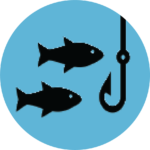Minnetonka
ABOUT LONE LAKE
Lone Lake, just off Shady Oak Road in Minnetonka, is a deep lake with great water quality and many recreational opportunities.

Water Quality

Water quality of Lone Lake is good, with average nutrient levels better than state standards. Phosphorus is the nutrient that fuels algae and plant growth. Phosphorus loading has caused some blue-green algae blooms, but algal toxins were below public health advisory levels. Latest aquatic plant surveys have shown Lone Lake is barely meeting DNR standards for plant diversity with 12 total plant species. Overall, Lone lake is a healthy, shallow lake with no water impairments listed.


Printable lake fact sheet
Past Projects
To improve the health of Lone Lake, the Nine Mile Creek Watershed District installed a raingarden in the center and around the edges of the lower parking lot.
The raingardens installed at Lone Lake Park significantly reduce the amount of phosphorus and other pollutants from getting into Lone Lake. Prior to the raingarden installation, over half of the phosphorus entering Lone Lake came from stormwater running off streets and parking lots around the lake.
Raingardens also provide food and shelter for pollinators, like butterflies. The Lone Lake Park project was completed as part of the Minnetonka Lakes Water Quality Improvement Project.
Lone Lake Raingarden Project Fact Sheet
For information about other past District projects, click here.
Recreation




Lone Lake has many recreational opportunities. Amenities include1.6 miles of hiking trails, 5 miles of mountain biking trails, recreational fields, basketball and tennis courts, horseshoes, skate park, picnic areas and shelter, and a canoe landing. A variety of fish species live in the lake including: black bullhead, black crappie, bluegill, and hybrid sunfish.
The Minnesota Department of Natural Resources may have additional information on the lake (including fishing regulations; location; water access sites; lake maps; lake reports on stocking, ice in/out and water quality; fish consumption; and aquatic plant surveys) if so, that information can be found here:
https://www.dnr.state.mn.us/lakefind/index.html
Downloadable water quality data can be found here:
https://www.pca.state.mn.us/water/water-quality-data
Shallow Lakes
Check out this story map to learn about what is so special about shallow lakes! To view the story map in a new browser window, click here.

